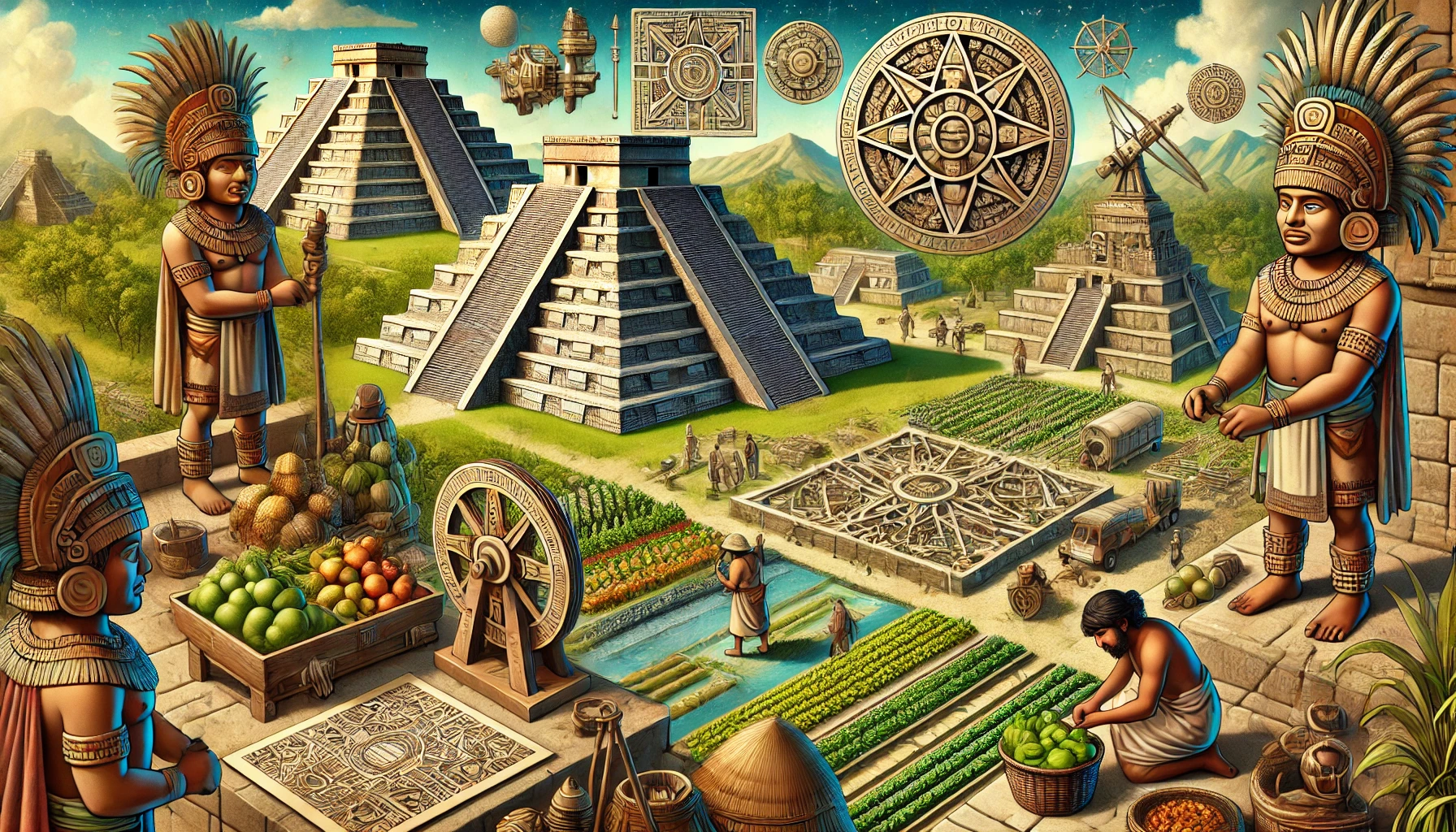Aztec technology is a fascinating aspect of the rich and complex civilization that once thrived in Mesoamerica. The Aztecs, who flourished between the 14th and 16th centuries, were renowned for their advancements in various fields, which significantly contributed to their society’s development. This blog post delves into the intricacies of Aztec technology, exploring its mechanisms, applications, and lasting impact.
What is Aztec Technology?
Aztec technology encompasses the tools, techniques, and innovations developed by the Aztec civilization. These advancements were evident in agriculture, architecture, astronomy, and various other fields. The Aztecs were highly skilled and resourceful, utilizing their knowledge to build and maintain a thriving society. Their technology was deeply intertwined with their cultural and religious practices, showcasing a sophisticated understanding of their environment.
Mechanisms of Aztec Technology
Agriculture:
One of the most notable achievements of Aztec technology was their agricultural system. They developed chinampas, or “floating gardens,” which were small, rectangular areas of fertile land constructed on shallow lake beds. This method allowed for intensive farming and provided a sustainable way to grow crops such as maize, beans, and squash. Chinampas were highly efficient, producing multiple harvests annually and supporting the large population of the Aztec capital, Tenochtitlán.
Architecture:
Aztec architecture was characterized by impressive constructions such as temples, palaces, and pyramids. They used a combination of local materials and sophisticated building techniques to create structures that were not only functional but also aesthetically pleasing. The Templo Mayor in Tenochtitlán is a prime example of their architectural prowess. This temple, dedicated to the gods Huitzilopochtli and Tlaloc, featured dual shrines and was the focal point of religious activities.
Astronomy:
The Aztecs were skilled astronomers who developed complex calendars based on their observations of celestial bodies. They used a 365-day solar calendar and a 260-day ritual calendar, which guided their agricultural practices and religious ceremonies. This understanding of astronomy was crucial for timing crop planting and harvesting, as well as for conducting rituals. The Aztec calendar stone, or Sun Stone, is a testament to their sophisticated timekeeping and astronomical knowledge.
Applications of Aztec Technology
Healthcare:
The Aztecs had a deep knowledge of medicinal plants and used them to treat various ailments. They practiced herbal medicine, utilizing plants like aloe, tobacco, and chili peppers for their healing properties. Their healthcare system was advanced for its time, integrating both physical and spiritual healing practices. Temazcales, or sweat lodges, were used for therapeutic purposes, combining steam baths with herbal treatments.
Trade and Economy:
Aztec technology also played a significant role in their trade and economy. They created intricate systems of canals and causeways that facilitated transportation and trade within their empire. This network enabled the efficient movement of goods and resources, contributing to the economic stability of the Aztec society. Markets, such as the great market of Tlatelolco, were central hubs where merchants exchanged goods like textiles, food, and crafts.
Benefits of Aztec Technology:
The advancements made by the Aztecs had several benefits that contributed to the prosperity and longevity of their civilization:
-
Sustainability:
Agricultural techniques like chinampas provided a sustainable way to produce food, ensuring a stable food supply.
-
Infrastructure:
Architectural innovations led to the construction of durable and functional buildings, which supported the administrative and religious needs of the society.
-
Knowledge:
Their advancements in astronomy and medicine enhanced their understanding of the world and improved their quality of life.
Future Trends in Understanding Aztec Technology:
As modern archaeologists and historians continue to study Aztec technology, new discoveries and interpretations are constantly emerging. These insights not only deepen our understanding of the Aztec civilization but also inspire contemporary innovations.
Archaeological Discoveries:
Ongoing excavations and research are uncovering new artifacts and structures that provide further insight into Aztec technology. These discoveries help us understand how the Aztecs solved practical problems and optimized their resources. For instance, recent findings at the Templo Mayor site have revealed more about Aztec religious practices and construction techniques.
Modern Applications:
Some of the principles and techniques developed by the Aztecs are being revisited and adapted for modern use. For example, the concept of chinampas is being explored as a sustainable agricultural practice in urban farming. Additionally, traditional Aztec medicinal practices are being studied for their potential applications in modern medicine.
Connecting Aztec and Modern Technologies:
It is interesting to draw parallels between ancient technologies and contemporary advancements. For instance, while studying Aztec agricultural techniques, one might also consider modern innovations like Atomization Technology. Both systems emphasize efficiency and sustainability, albeit in different contexts. Atomization technology involves breaking down liquids into fine droplets, which can optimize processes in healthcare, manufacturing, and agriculture, just as the Aztecs optimized their farming practices with chinampas.
Conclusion:
Understanding Aztec technology provides a glimpse into the ingenuity and resourcefulness of one of history’s most fascinating civilizations. From their sophisticated agricultural systems to their impressive architectural feats, the Aztecs made significant contributions that continue to influence us today. By studying their advancements, we not only honor their legacy but also gain valuable insights that can inspire future innovations. Whether through ancient practices like chinampas or modern technologies like atomization, the principles of efficiency and sustainability remain relevant across the ages.



